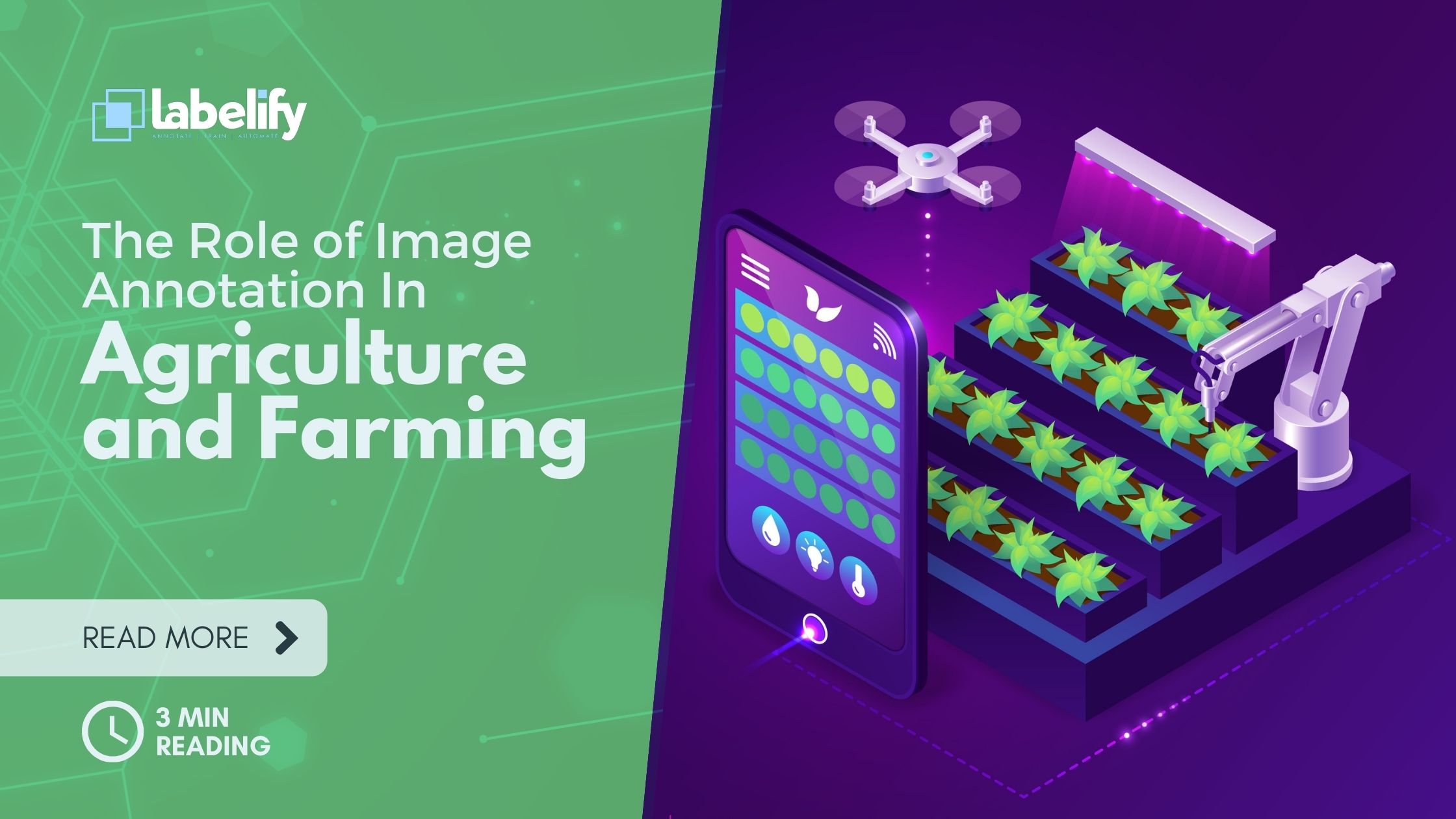Table of Contents
The Role Of Image Annotation In Agriculture And Farming
An image annotation is essential for all kinds of machine learning-based AI models. AI has made agriculture more productive and efficient by using advanced equipment and techniques.
Yes, robots, drones, and AI-enabled devices are used extensively in the agricultural sector to perform various tasks. All these machines work on computer vision-based technology. These AI-enabled machines can be trained using training data sets created through images annotation.
Image annotation for AI and Machine Learning
Image annotation refers to the data labeling technique that makes objects easily identifiable for machines. Machine learning algorithms use a lot of these datasets. Image annotation is an important part of model development.
Computer vision-based AI models can all be trained if they are given high-quality data and the right algorithm. There are many image annotation methods, and images are annotated according to their compatibility with the model and other feasibility.
IMAGE ANNOTATION in AGRICULTURE
Image annotation for the agriculture sector involves annotating many objects (objects of interest) according to the model requirement. Everything, from plants to fruits or land, is annotated in order to make them easily recognizable and understandable for machines. We will now discuss the importance of image annotation in agriculture and farming.
Image Annotation to Robotics to Detect Crops
Robots must be able to detect the crops, plants and floras in order to pick the fruits or vegetables. It is important to accurately identify such objects. Image annotations using the bounding-box technique can be used to annotate objects making AI in agriculture possible.
Image annotation to detect unwanted crops
While cultivating fields in agriculture, it is not only important plants that are grown but also unwanted crops to be assessed. Images are used to highlight wildflowers, weeds, and other plants. This allows the machine to remove it for better growth and yield.
Robots can detect unwanted crops by using a large number of annotated photos to train them.
Image Annotation to Monitor Crop Health
Now, AI-enabled devices such as drones and robots can monitor crop maturity. The image annotation technique is used to identify such things. There are many methods that can help monitor the health and condition of your crop, including semantic segmentation and other popular image annotation techniques.
Geo Sensing of Fields Image Annotation
One of the most crucial uses of image annotation is to identify the soil condition and health. Yes, image annotation is possible for geo sensing. This allows you to determine the state of an agricultural field before making the decision about whether or not to cultivate it. Semantic image segmentation allows for large-scale data generation in order to perform deep learning in the agro field.
Labelify is the most trusted provider of image annotation services in the industry. Labelify also offers high-quality image annotation services for the agricultural sector. AI companies looking for high-quality training data to train drones and robots can obtain the annotated images from this site. This solution is scalable, which allows them to create large volumes of AI training data sets at a low cost.
It offers data not only for agriculture but also for other areas such as automotive, retail and autonomous vehicles. To ensure privacy and safety, the training data for AI is created in a highly secure environment.
Image Annotation to Live Stock Management
AI-enabled machines make animal husbandry easier and more productive. Yes, AI-enabled drones can monitor animals inside and outside the campus. Image annotation is another technique that makes these animals easily identifiable in different situations. The animals can be identified with precision using semantic image segmentation and bounding boxes.




